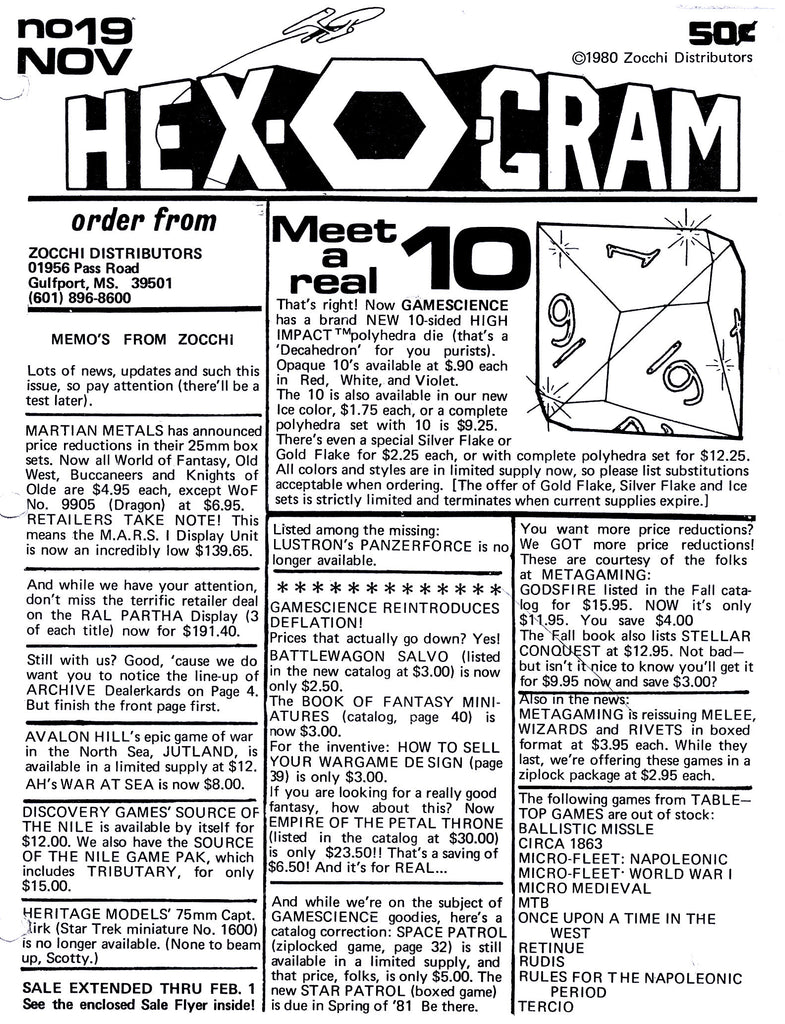Polyhedral dice have been used for thousands of years; but did you know that when Dungeons & Dragons was first published, it used only five dice? What about the other two?
Let's learn a little bit about the history of D&D dice sets through the twentieth century.
The History of D&D Dice
An illustration of important twentieth-century innovations in the game of Dungeons & Dragons and the dice used to play it
1904
Albert Friedenthal files patent 809,293 for a 10-sided die.
1913
H.G. Wells publishes Little Wars, a set of rules for playing with miniature infantry, cavalry, and artillery.
1950-1961
Icosahedron die, numbered 0-9 twice, is invented by Yasushi Ishida and distributed by the Japanese Standards Association.
1963
Patent 3,208,754, "DICE GAME WITH A TETRAHEDRON DIE," is filed by Fredda F. S. Sieve. It includes five platonic solids, and an icosahedron numbered 1-20.
1968
David Wesely creates Braunstein, which introduces the concept of a game master and playing an individual character instead of faceless army units.
August 1969
Gary Gygax and Dave Arneson meet at Gen Con, and Gary gives him a draft of his Chainmail game.
1971
Gary Gygax and Jeff Perren publish Chainmail, and Dave Arneson creates Blackmoor. Together, these games have most of the concepts which would be the foundation for Dungeons & Dragons.
November 1972
Megarry and Arneson drives to Lake Geneva through a snowstorm to demo Blackmoor for Gary Gygax. Mostly, it was Arneson rolling the six-sided die behind his binder.
1972
Don Lowry is one of the first American suppliers of the 5-Platonic dice set, for his game Tractics.
January 1974
Dungeons & Dragons is published for the first time as a set of three rulebooks.
1977
TSR publishes the Dungeons & Dragons Basic Set, which includes a 5-piece Platonic solid dice set.
1979
TSR experiences a dice shortage and includes numbered cutout cardboard chits to use in place of dice, along with a coupon for ordering dice from TSR.
November 1980
Gamescience advertises their new invention—the d10, which is a truncated pentagonal trapezohedron.
1981
Moldvay Basic Set (The Magenta Box) includes a d10 for the first time
1985
The Zocchihedron d100 is released. Critics deride it as "Zocchi's golf ball."
March 1990
Gamescience introduces the Deckaider(TM), the first d10 numbered 00-90. Chessex introduces their own version in August, both having developed it independent of one another.
January 1998
Michael Bowling files a patent for crystal dice.
Download a shareable infographic of this timeline
Even when Dungeons and Dragons first rose from the ashes of a random tavern meetup, the game used five dice: a d4, d6, d8, d12, and d20. The creators of DND, Gary Gygax and Dave Arneson, intended to use a d6 and d20 for their game. The 6-sided die proved able to handle tactical proximations, turn-determinations, and was simply easier to get. The 20-sided die worked well for percentile rolls, besides its becoming increasingly representative of DND and Nerdom in general.
Gygax and a friend, Don Kaye, formed Tactical Studies Rules (TSR). They found a classroom supplier of five dice and thought to throw out the three they would not need. Instead, they developed their game to include and use the extras for other purposes. This proved a good idea for wizards and other physically-weak characters who needed to roll for damage from a quarterstaff.
The classroom dice were terribly made, crumbling after a short time because of their cheap resin construction.
Here's a quick 5-minute video explaining what each of the dice in a standard RPG dice set is used for, along with the history behind them:
1977: When D&D First Included Dice in the Box
The original 1974 edition of Dungeons & Dragons had three rulebooks, but no dice; you were supposed to get those on your own.
In 1977, TSR hired J. Eric Holmes to create an edition of basic rules for D&D. This edition is sometimes called the "blue box" or "blue cover" edition. This edition, being for beginners, included a set of dice as a convenience—a d4, d6, d8, d12, and d20.

Holmes edition, first printing

Holmes edition, second printing

Dice set from the Holmes edition
1980: The first modern d10
Since the original five dice in the classroom dice set used for the Holmes edition were based on the five platonic solids, there was no 10-sided die.
A platonic solid is made up of by sides which are all identical in shape and size, with all angles equal and all sides equal, with the same number of faces meeting at each vertex.
However, because of our decimal numbering system, it made sense to have a 10-sided die. When the 20-sided die was numbered 0-9 twice, it was easy to use it also as a 10-sided die to generate a random number between 0-9; but once the icosahedron was redesigned to be numbered 1-20, it became necessary to include a die specifically for generating a number between 1-10 (or 0-9).
Thus, the need for the modern d10 was born, and it was answered by Gamescience in 1980.
Here is an advertisement from their Hex-a-Gon newsletter advertising the new invention:

Gamescience announces their new d10 die. Credit from Kevin Cook, DiceCollector.com.
Adam
This is cool, thanks for making it. I’ll tell my wife she is the same age as a d10 and she’ll roll her eyes.